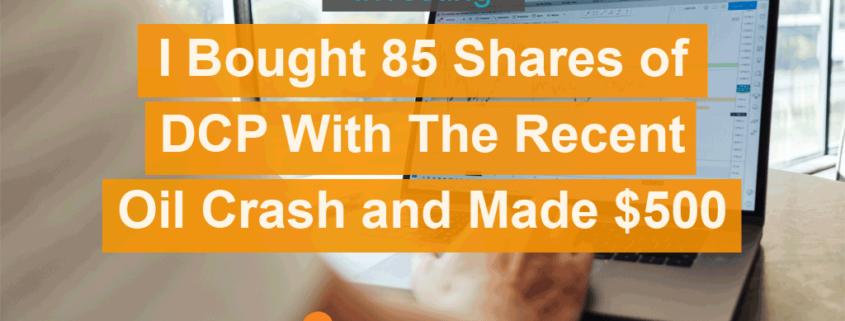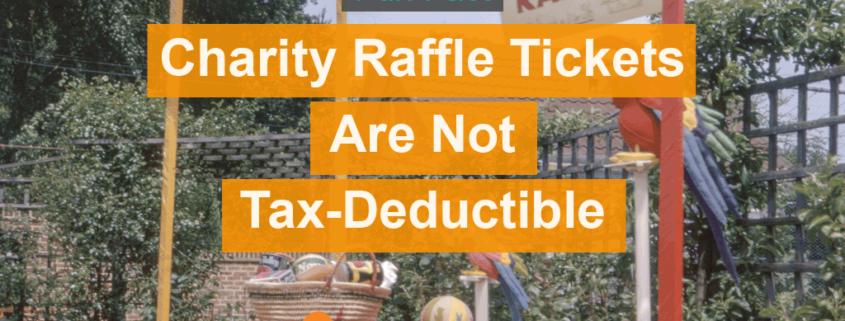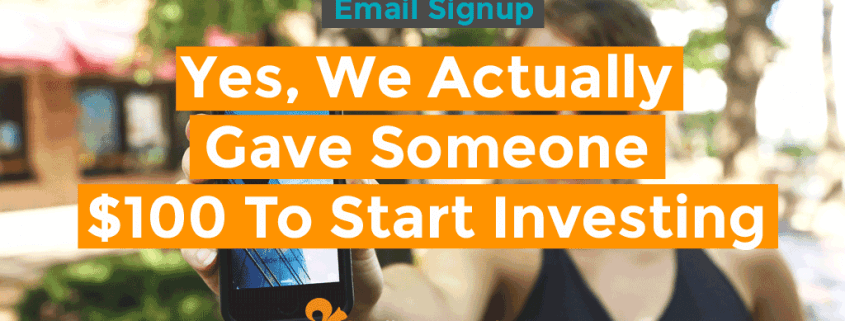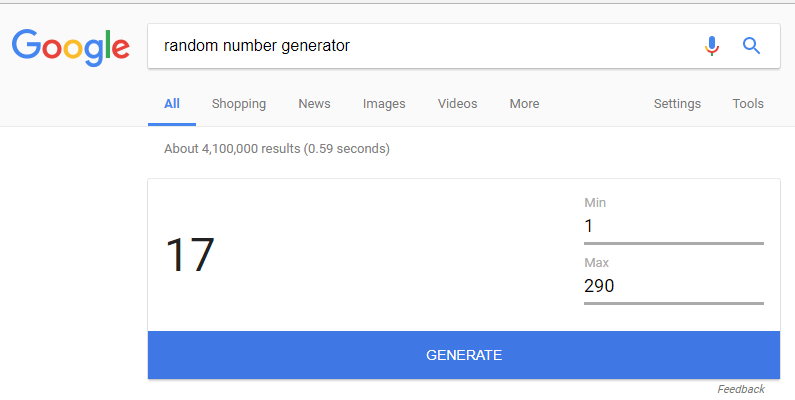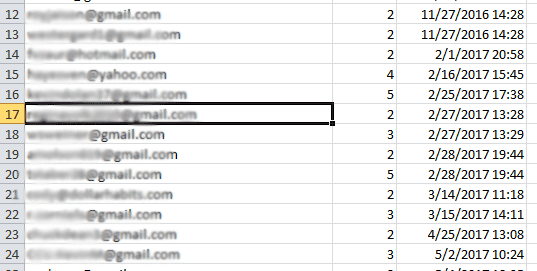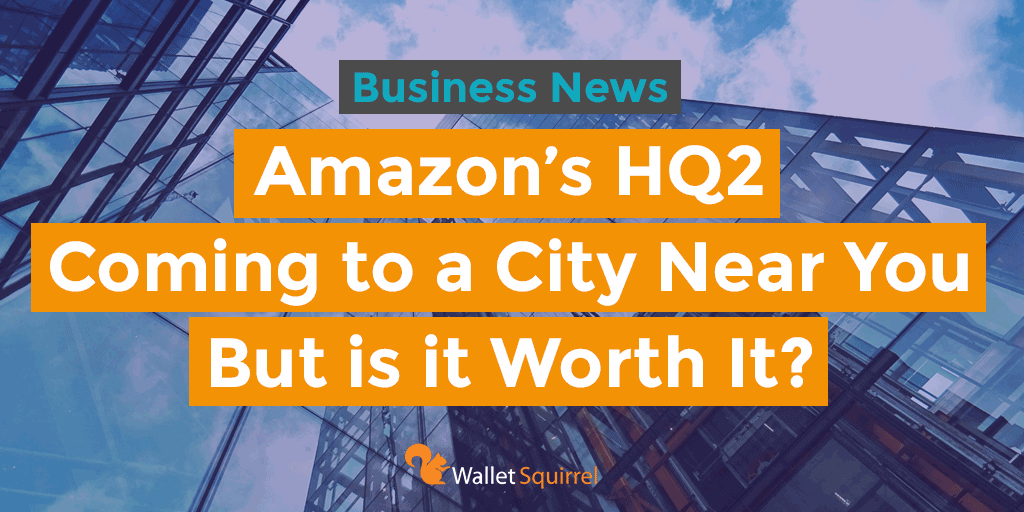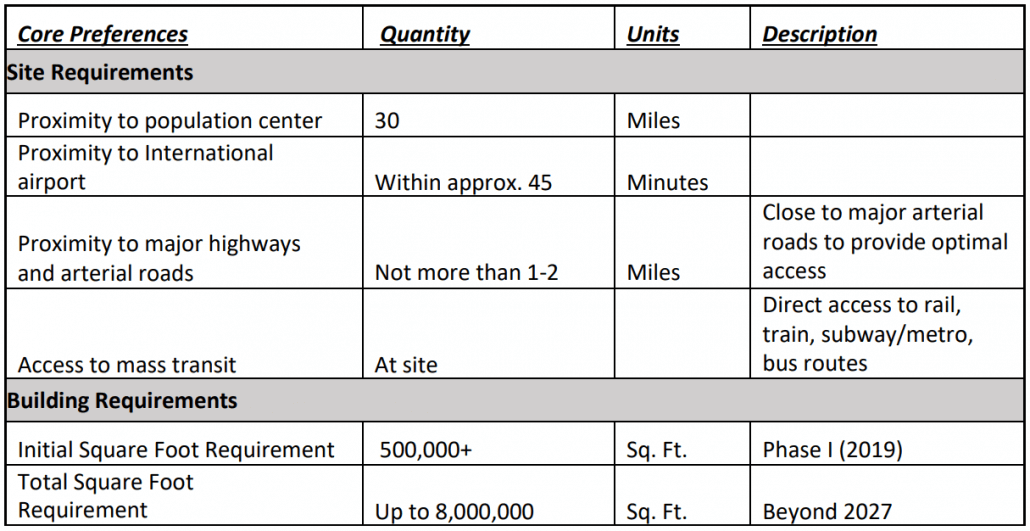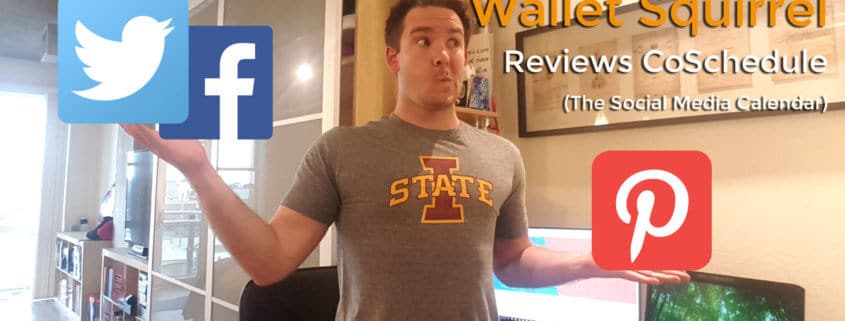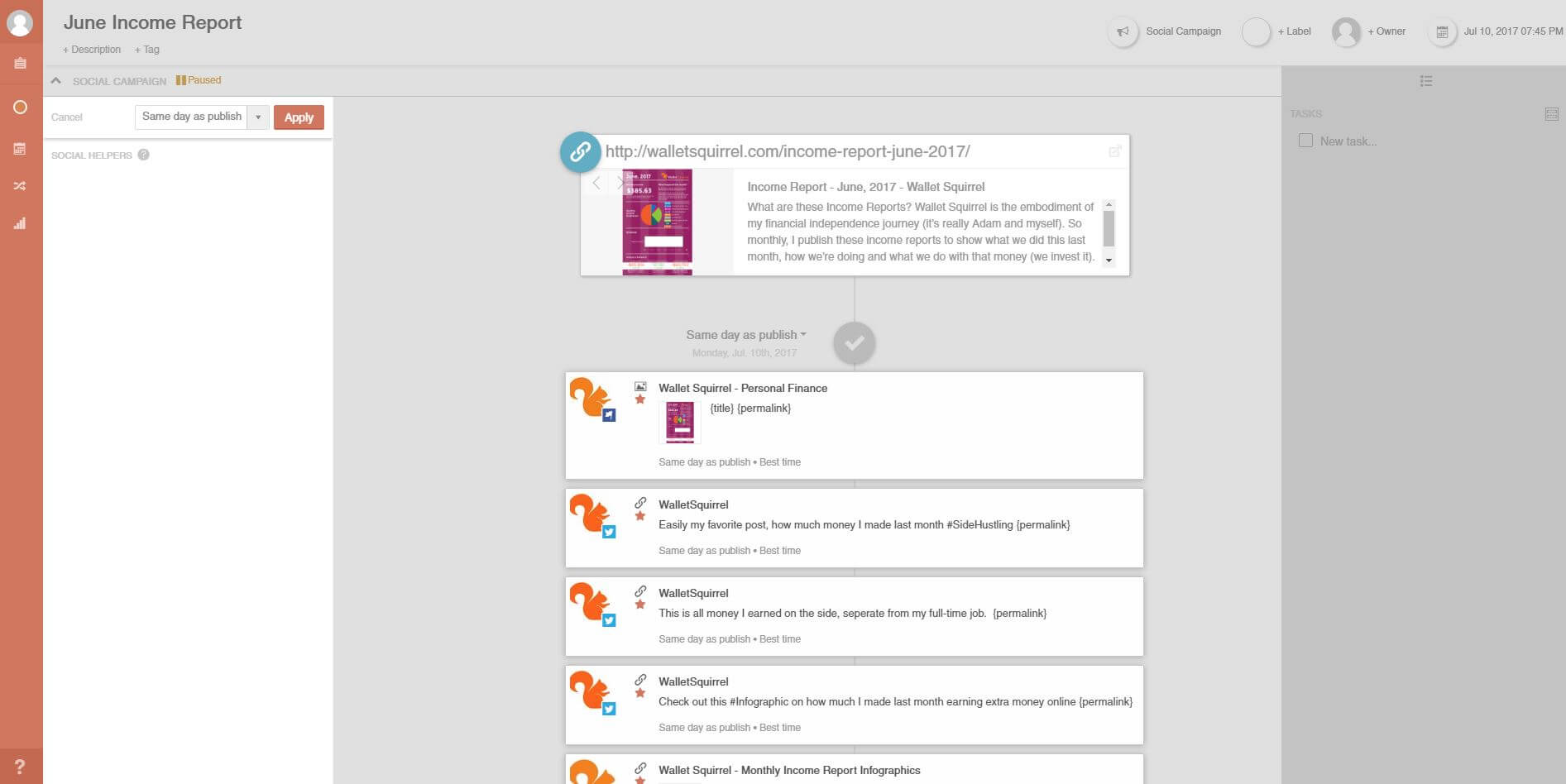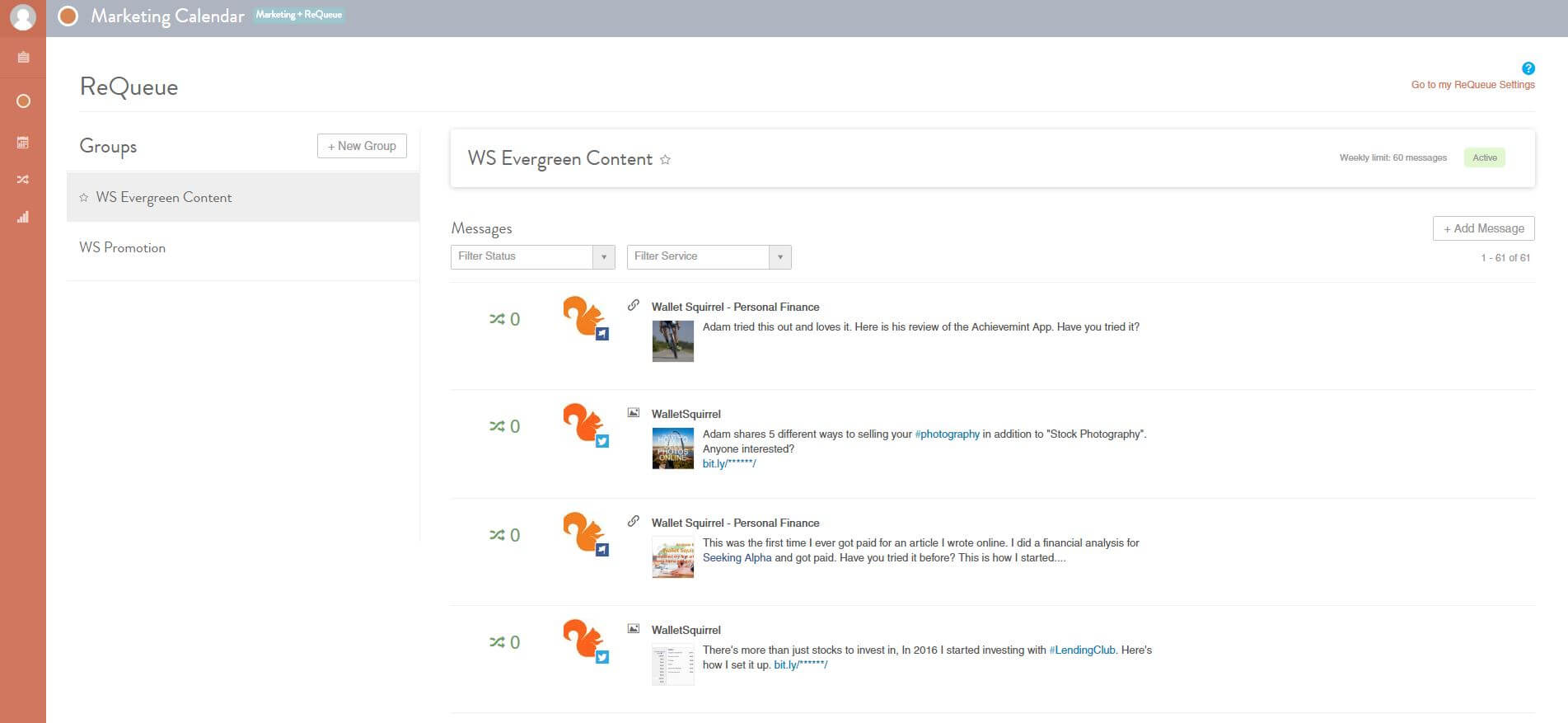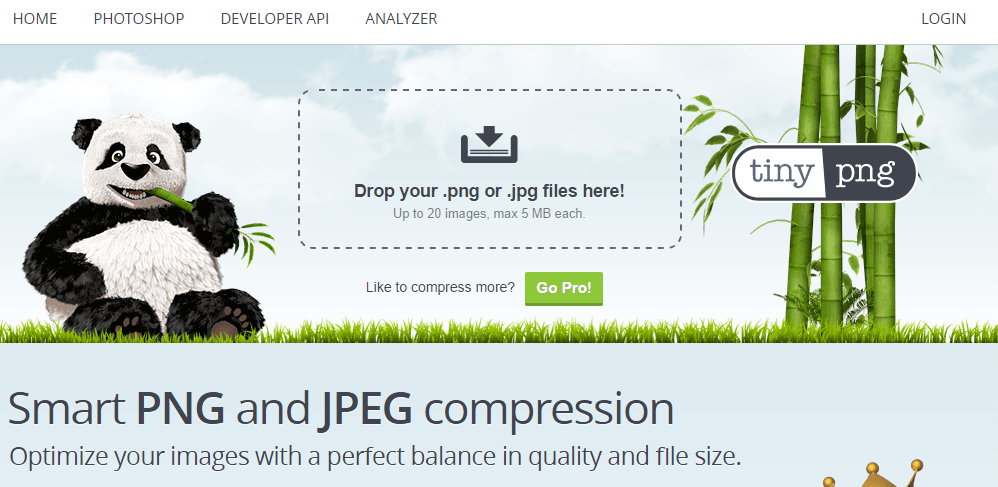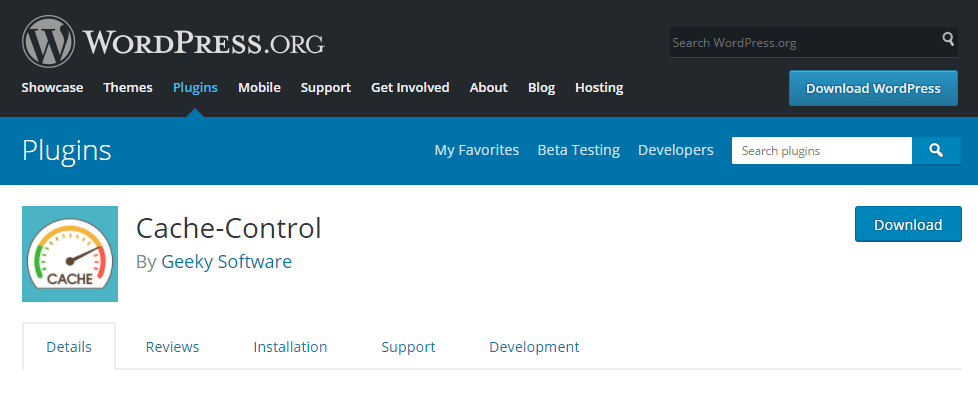50 Amazon Affiliate Website Examples Making Money in a Niche
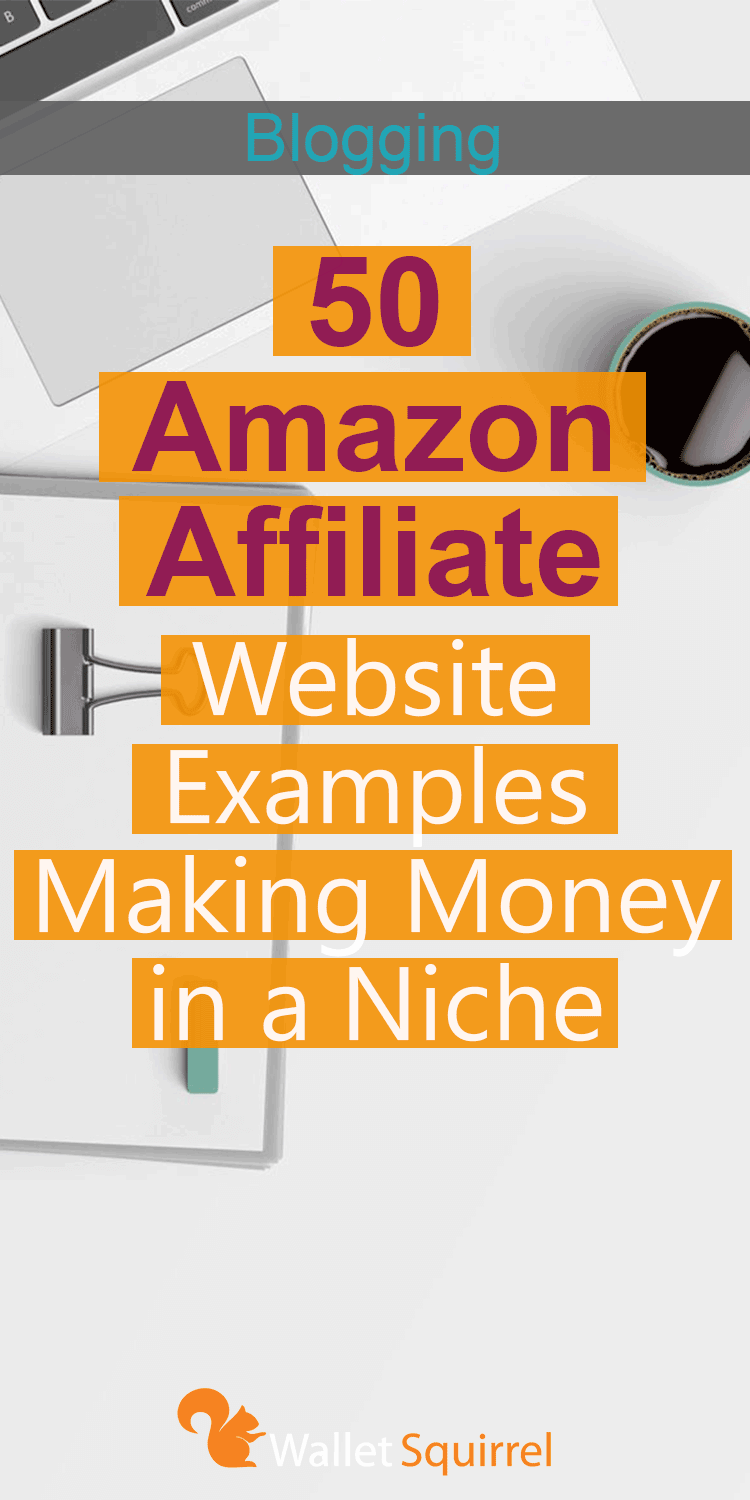
I’ve always had a hard time finding a good list of Amazon Affiliate Website Examples, so here is my personal list of inspiration that I’ve built up over the years. I’ve been itching to create a new website lately as an awesome way to make money, but before I start I thought I would review my list of successful Amazon Affiliate Websites currently making money for some lessons learned.
What is an Amazon Affiliate Website?
An Amazon Affiliate Website is any website that earns money by linking products from their website to the Amazon store. This can be a blog or website that references a product with a link back to Amazon, so customers can purchase that particular item.
It’s actually really easy to sign-up for their affiliate program, here is how to become an Amazon Affiliate.
The idea is that you are referring customers to Amazon where you gain a commission if a user buys from the Amazon store. This is usually 5%-10% per purchase. Amazon tracks this by a special code from the URL link on your website. Click here to create your own website with affiliate marketing.
Many of these websites use Amazon, along with other affiliate programs to boost revenue. Here is a list of 108 Best Affiliate Programs in addition to Amazon to make money for bloggers and influencers.
22 Successful Amazon Affiliate Website Examples
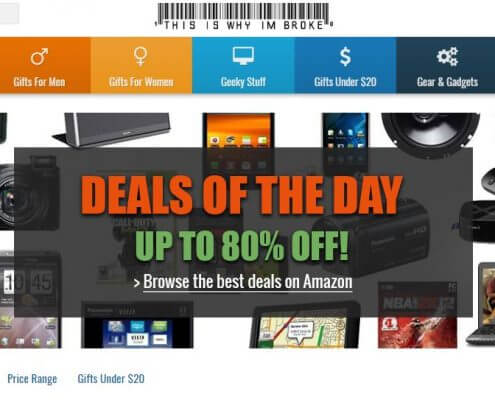
ThisIsWhyImBroke – Amazon Affiliate Website Example
ThisIsWhyImBroke.com
This is one of my favorite Amazon Affiliate Websites because it’s so freaking cool! These guys gather up the coolest gadgets, gifts, tech and oddities from Amazon and around the web to showcase on their website. These are gag gifts and fun gadgets people love to buy. They likely use an SEO tool like SEMrush to find great blog post ideas. This site uncovers the cool, often hidden, things of the internet and all you have to do is click on one of the Amazon Affiliate links to buy it from the Amazon store. ThisIsWhyIAmBroke works with more than just Amazon, but it’s one of their biggest revenue sources. It’s entirely possible to create a website just like this.
Monthly Visitors (SimilarWeb) : 2.40M Visitors
Average Post Length: 10 – 160 Words
One of Most Searched Products: Salt Firing Shotgun
How much do they make: Around $20,000+ per month from Amazon (source)
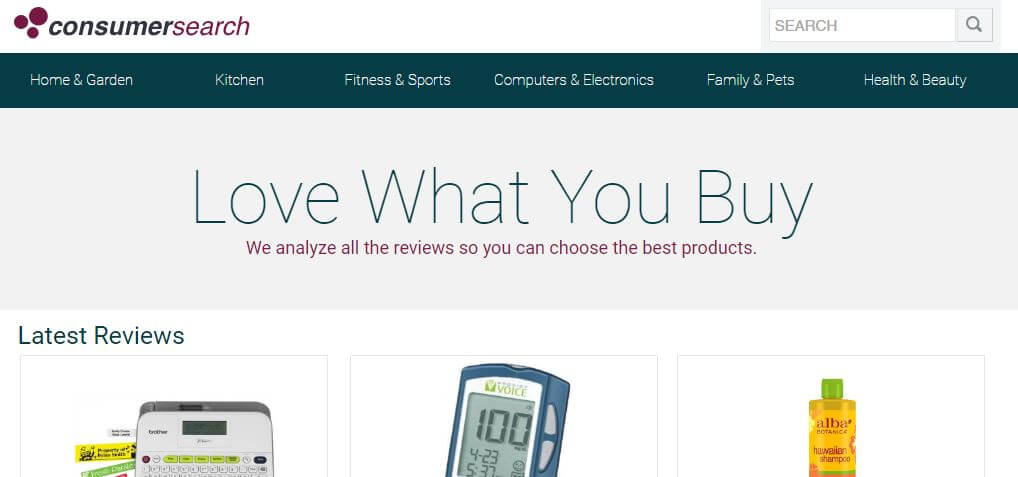
ConsumerSearch – Amazon Affiliate Website Example
ConsumerSearch.com
This website started in 2000 as a review website which helped consumers by reviewing different products and offering the consumer the chance to purchase the product. These have become a very popular way for bloggers to create Amazon affiliate websites. It’s a great way to feature products and a good review can be very motivating for someone to purchase.
Monthly Visitors (SimilarWeb) : 1.10M Visitors
Average Post Length: 1,000 Words
One of Most Searched Products: Bose Sound Bar
How much do they make: This site was bought for $33 Million from About.com in 2007 (source)

GiftIdeaGeek.com
This Amazon Affiliate Website is similar to ThisIsWhyImBroke in that the main homepage is set up as an affiliate product page which is perfect selling. The idea is that GiftIdeaGeek focuses on geeky and pop culture referenced products that appeal to that niche. This website uses witty satire to hook the audience into “clicking through” on creative products and if they buy, GiftIdeaGeek gains the affiliate commission. In addition to the homepage, they use a blogroll section to gain SEO and additional affiliate opportunities.
Monthly Visitors (SimilarWeb): Unknown
Average Post Length: 1,000 Words
One of Most Searched Products: Clever Socks
How much do they make: Unknown
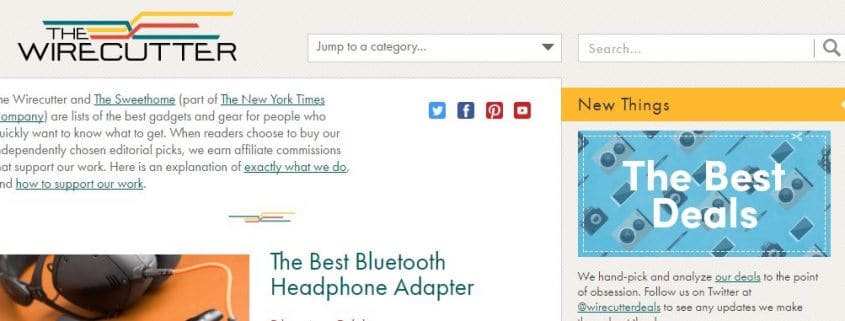
TheWirecutter – Amazon Affiliate Website Example
TheWirecutter.com
This is a great example of a top-notch review site. They start at the homepage notifying that they make affiliate commissions but provide top-end reviews from independent reviewers. This is great, to be honest upfront. In addition to being transparent, they also take the content is king strategy. I randomly clicked on their “Top Home Projector” post where they reviewed (and linked) to several high-end home theater projectors. Keep in mind that these high priced items produce high commissions. That may explain why they spent the time to write a 5,000 word post on it. This site seems to do everything right in being a prime example of an Amazon Affiliate Website. This site now has over 60 staff members working for it.
Monthly Visitors (SimilarWeb) : 8.10M Visitors
Average Post Length: 3,000-5,000 Words
One of Most Searched Products: Air Purifier
How much do they make: In 2015, this site combined with The Wirecutter made $150 Million in eCommerce sales. So you can get an idea of their commission revenue. (source)
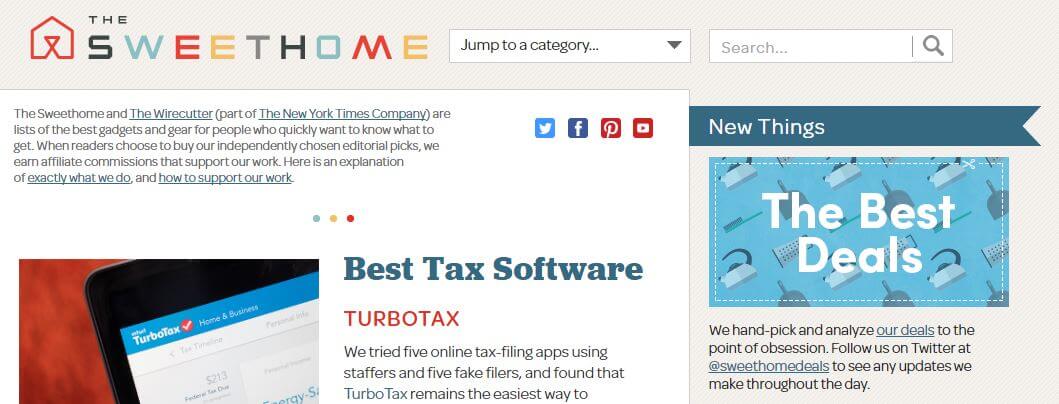
TheSweetHome – Amazon Affiliate Website Example
TheSweetHome.com
This is the sister site to the affiliate marketing site TheWirecutter. Another amazon affiliate website that lists gadgets and gear that the website reviews. They come out and say it on their homepage, they earn money by affiliate commissions. Apparently, this site receives over 1.8M visitors, which is pretty impressive considering this site only started in 2013. I guess the moral of the story is, it’s not too late to start a review website. It also helps to have incredibly long reviews. In fact, their one soda stream review had over 13,000 words. This is a great example that content is king.
Monthly Visitors (SimilarWeb) : 2.50M Visitors
Average Post Length: 4,000 – 5,000 Words
One of Most Searched Products: Robot Vaccum
How much do they make: In 2015, this site combined with The Wirecutter made $150 Million in e-commerce sales. So you can get an idea of their commission revenue. (source)

GearPatrol – Amazon Affiliate Website Example
GearPatrol.com
This is an interesting style review website that reads more like a magazine than a review site. This definitely helps give it some more credit than throwing a up a bunch of products and hoping people read them. It’s interesting that it takes a different approach, rather than writing long content, it focuses on a clean layout and video reviews to show people the product they’re testing, racking in 2.3 million monthly viewers. This is incredibly valuable for people willing to buy, but want to see the product in a video demo before purchasing. Now compare this site to what the site looked like in 2008 (here).
Monthly Visitors (SimilarWeb) : 3.30M Visitors
Average Post Length: 100-500 Words
One of Most Searched Products: Alera Elusion Series Office Chair
How much do they make: I don’t know how much they make
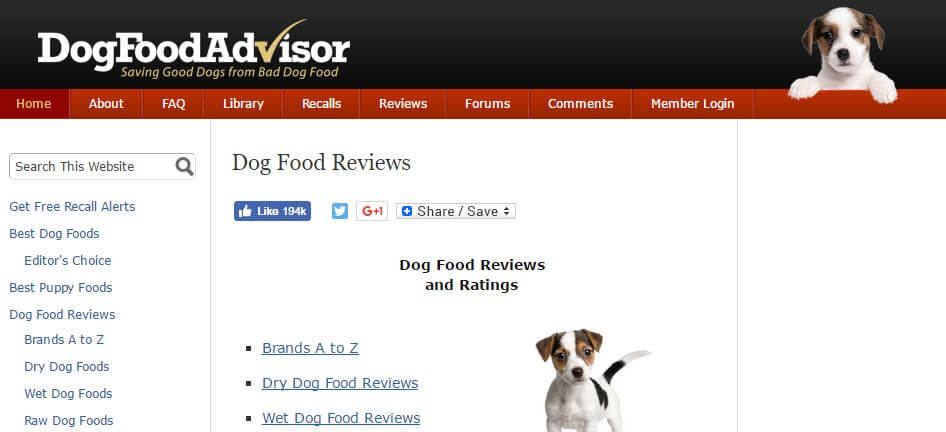
DogFoodAdvisor – Amazon Affiliate Website Example
DogFoodAdvisor.com
This is a testament that design isn’t everything. Look at their homepage. There is one, very cute puppy, but nothing else. I’m not sure how this site is successful, but from looking over their latest articles, they are receiving regular viewers and comments. Something is working. Then again, people do love their dogs.
Monthly Visitors (SimilarWeb) : 1.30M Visitors
Average Post Length: 1,000-1,500 Words
One of Most Searched Products: Dog Food
How much do they make: I don’t know how much they make

BabyGearLab – Amazon Affiliate Website Example
BabyGearLab.com
So combine a review site and something people everyone loves, like babies. Imagine all the confusion new parents have when they bring a new baby into the world. What do they do, what do they need, what is the best? BabyGearLab solves that by reviewing baby stuff and helping parents understand it and buy it. This site has been around since 2011 helping parents through the impossible decisions of what is best for your baby.
Monthly Visitors (SimilarWeb) : 234.10K Visitors
Average Post Length: 6,000-10,000 Words
One of Most Searched Products: Convertable Baby Seat
How much do they make: I don’t know how much they make
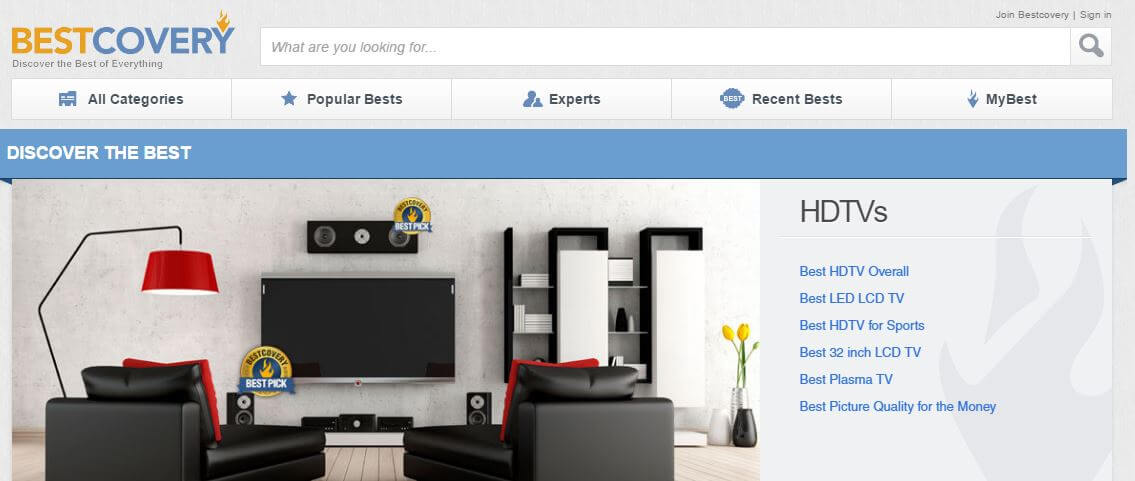
BestCovery – Amazon Affiliate Website Example
BestCovery.com
Review sites continue to be an impressive way to make an affiliate commission. This review site doesn’t even niche down, their tag line is “Discover the Best of Everything”. From my initial review, they continue the streak of long content to rank high in Google. In doing this, they list multiple items really pushing their 1st, 2nd, 3rd and so on picks. All conveniently with their own price tags linking to Amazon. With only 152 thousand monthly visitors, it’s not as much as other sites, but they continue to push out new content and gain new Facebook users. Anyone with a blog knows, it’s hard to get Facebook users, so they’re doing something right.
Monthly Visitors (SimilarWeb) : 152.10K Visitors
Average Post Length: 4,000-6,000 Words
One of Most Searched Products: Best Epoxy
How much do they make: I don’t know how much they make.
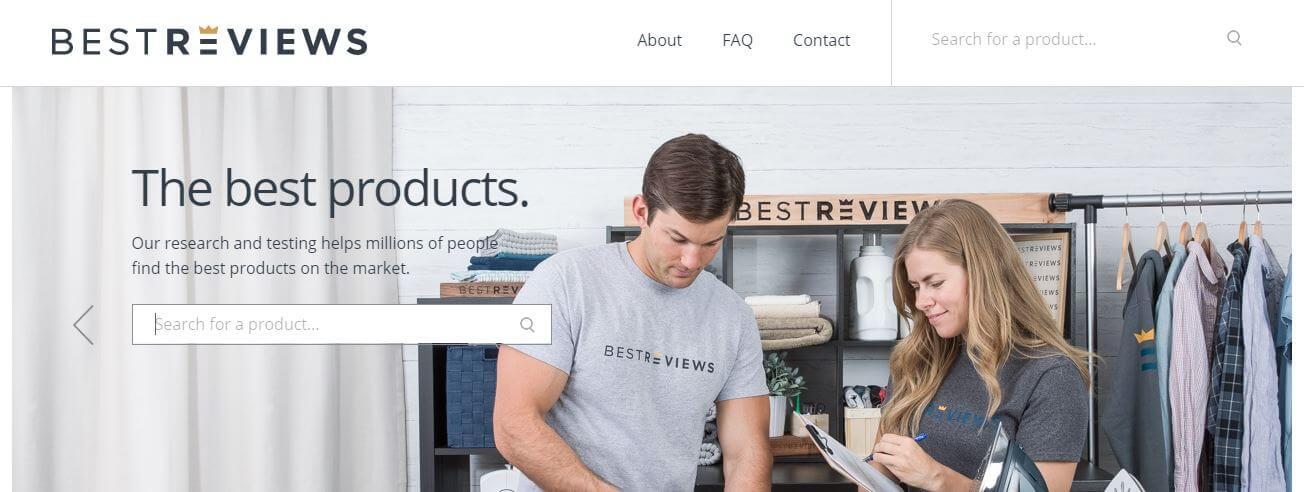
BestReviews – Amazon Affiliate Website Example
BestReviews.com
This is one the cleanest designs I’ve seen of an Amazon Affiliate Website. It has a very professional look for a review website, but they don’t overcrowd you with product reviews right off. This site really sets itself apart with their actual videos and reviews inside of their test center. You know these testers are actually testing the product rather than copying a review from another site or making things up. It’s so legit that I will likely be back to this site for future reviews for my purchases. It really gains your trust with the photos and videos even though you know they are making money through the affiliate commissions. Plus they buy all the products themselves and never accept any products from the manufacturer to maintain objectivity, but when you bring in 3.1 million visitors per month, you can buy a few items to review.
It’s so legit that I will likely be back to this site for future reviews for my purchases. It really gains your trust with the photos and videos even though you know they are making money through the affiliate commissions. Plus they buy all the products themselves and never accept any products from the manufacturer to maintain objectivity, but when you bring in 3.1 million visitors per month, you can buy a few items to review.
Monthly Visitors (SimilarWeb) : 3.80M Visitors
Average Post Length: Around 1,000 Words + Videos
One of Most Searched Products: Best Hair Bleaching Products
How much do they make: I don’t know how much they make.
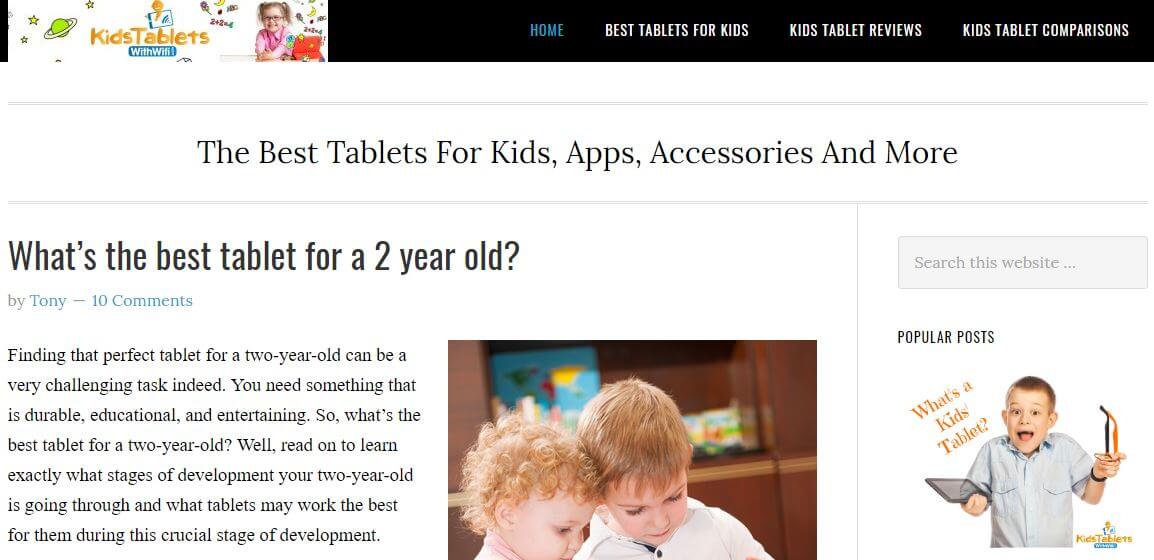
KidsTabletswithWiFi – Amazon Affiliate Website Example
KidsTabletsWithWiFi.com
This is an Amazon Affiliate Website that has really niched down into specifically, as the name implies, kids tablets with Wifi. These are high priced items that produce high commissions in a huge market, children. What is the best tablet for kids? Do you give them an iPad? What if it breaks? Is there a cheaper option? These are all questions that this site helps with. It runs like a blog, but with a relatively simple design. It’s hard to tell if they have produced much new content because they don’t include dates with their blog posts. However, this site is just one blog, with three additional pages for “Best Tablets for Kids”, “Kids Tablet Reviews” and “Kids Tablet Comparisons” all of which are likely keyword researched names. It’s likely the niched down keyword research to bring in the traffic, because the content while good, is relatively short with 300-500 words per post.
Monthly Visitors (SimilarWeb): 1.80K Visitors
Average Post Length: 400 – 600 Words
One of Most Searched Products: Fire HD Kids Tablet
How much do they make: I don’t know how much they make.

LongBoardReviews – Amazon Affiliate Website Example
LongboardReviews.net
Another example of an Amazon Affiliate Website that niched down to long boards. These are like skateboards but longer and meant to cruise, going longer distances than skateboards. It’s a relatively simple website that loads the user with tons of products from the homepage but highlights the lack of comments per review (usually 0 – 2 comments). The typical length of an article is 300-500 words so they are relying on their specific niche for traffic. Not bad for a “.net” domain as they are less common than their popular counterparts “.com”. It’s not the best example, but I’m going for a range.
Monthly Visitors (SimilarWeb) : 2.70K Visitors
Average Post Length: 400 – 600 Words
How much do they make: The website sold in 2016 on Flippa for $5,275. Usually a website sells for a year’s worth of revenue. So we can expect this site to make around $500 per month (source)

FootballSnackHelmets – Amazon Affiliate Website Example
FootballSnackHelmets.com
This is one of the most niche markets I’ve ever seen. It’s gems like these that make me confident the right keyword research in the smallest of niches can lead to a successful Amazon Affiliate Website. I’m not saying this specific site is successful though. They have only 2 blog post with minimal content for each “Football Snack Helmet”. It seems like someone had great intentions to set up an affiliate site with a clean design but forgot about it after 2 blog posts, ending in June 2016. This is one of the easiest examples that you could set up in a weekend.
Monthly Visitors (SimilarWeb) : 2.20K Visitors
Average Post Length: 100 – 300 Words
One of Most Searched Products: Cleavland Browns Kids Uniform
How much do they make: I don’t know how much they make, but we anticipate it’s seasonal and reliant on the US customer base.
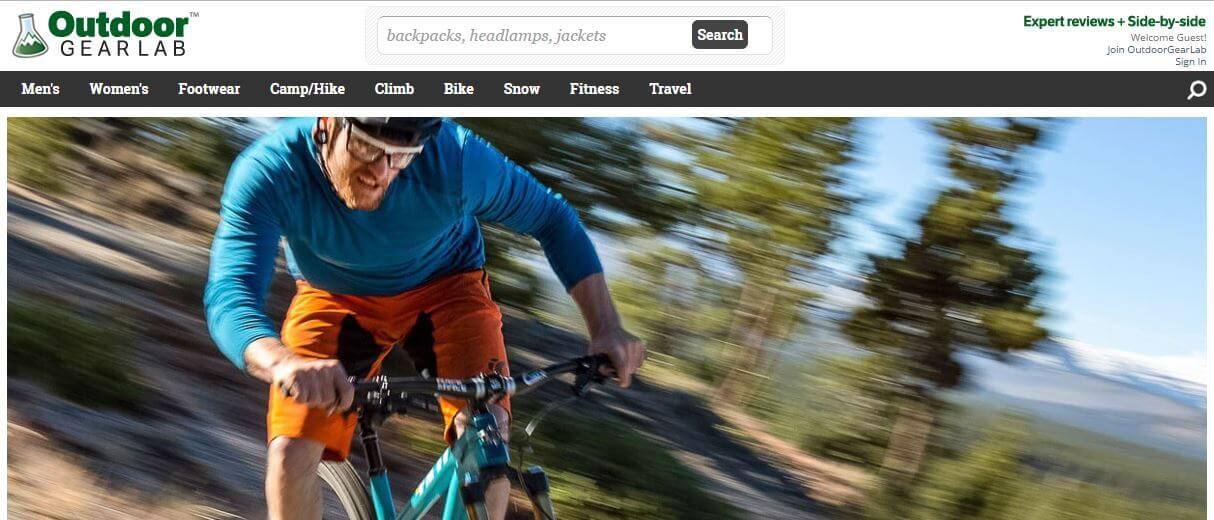
OutdoorGearLab – Amazon Affiliate Website Example
OutdoorGearLab.com
This site is owned by the same owners as BabyGearLab.com so you’ll notice some similarities. It’s a really clean site that looks more like REI’s website than a review site. They generate tons of organic traffic for each review category like ski gloves combines all of their test products (amazon links), test experiences, reviews and opinions so that the review pages reach around 6,000 words. This is a great way to do a review page in my opinion to combine the word length of each review into one huge, helpful page. Plus keep in mind that people love outdoor gear. It’s insanely fun to go outdoors but you never know if you have right equipment. To figure out what’s right, these outdoor review sites help immensely!
Monthly Visitors (SimilarWeb) : 1.60K Visitors
Average Post Length: 5,000 – 7,000 Words
One of Most Searched Products: Arc’teryx Jacket
How much do they make: I don’t know how much they make.

TopTenReviews – Amazon Affiliate Website Example
TopTenReviews.com
This is an older site (2003) with some heavy domain authority. That explains the crazy amount of content this site contains. It’s helpful though when you have 350+ employees. This isn’t a small enterprise, and they still utilize the Amazon Affiliate network to monetize their site. They use long and wordy articles to review products, maximizing the SEO of each page. The biggest difference from this site and others is the amount of digital content these guys review. Their digital content ranges from Antivirus Software to Credit Card processing. This isn’t a typical Amazon product, but digital content can earn affiliate commissions through other sources than Amazon. Amazon is a great resource to monetize your site, but it’s definitely not the only way.
Monthly Visitors (SimilarWeb) : 12.80M Visitors
Average Post Length: 3,000 – 5,000 Words
One of Most Searched Products: Best Printer
How much do they make: I don’t know how much they make.

TomsHardware – Amazon Affiliate Website Example
TomsHardware.com
Do you remember 1997? That’s when this website was created. You could maybe tell from the website homepage that looks more like About.com than a review website, then again they have over 1.5 million pages indexed. Don’t make the same mistake I did, this isn’t a door and sink hardware company, this is computer hardware for hardcore nerds who build their own computers. I’m sure this site is at the forefront of every build-it-myself computer geek out there (I’m one ). The site is now owned by Purch, the same people who own TopTenReviews. These guys have really got a good handle on successful Amazon Affiliate Websites.
Monthly Visitors (SimilarWeb) : 47.50M Visitors
Average Post Length: 500 – 1,000 Words
One of Most Searched Products: Best Gaming Monitors
How much do they make: I don’t know how much they make.
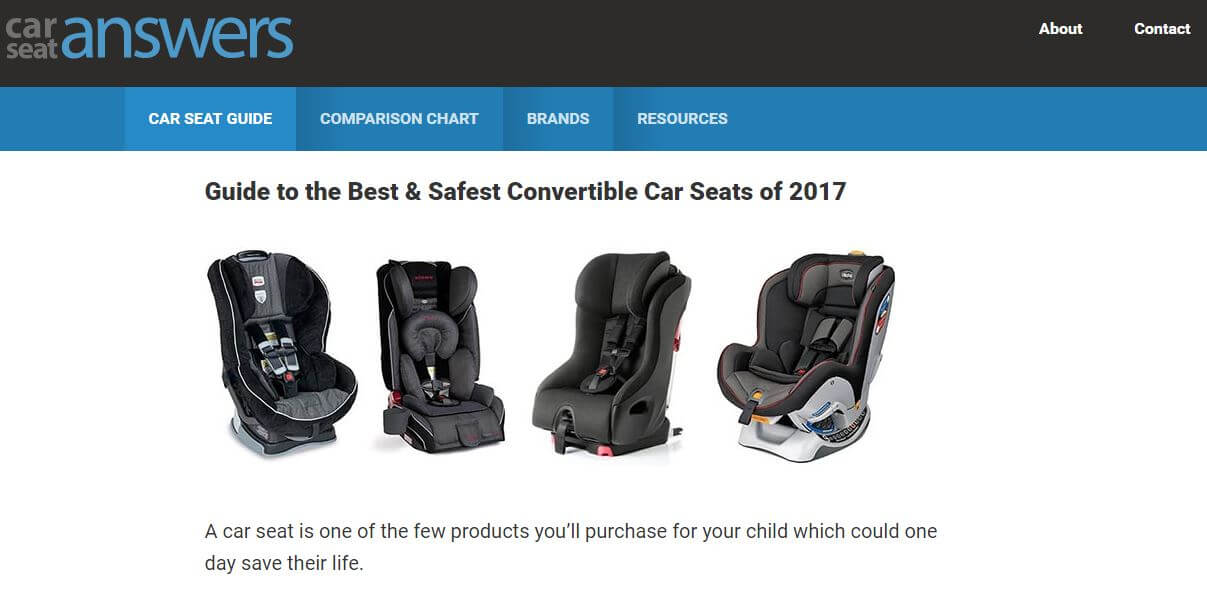
CarSeatAnswers – Amazon Affiliate Website Example
CarSeatAnswers.com
It’s really simple and plain websites like this that make me happy! If something this plain can bring in so many visitors, than someone creative and design oriented like me can do better, right? CarSeatAnswers focuses on keywords like “Car Seat Answers” and “Car Seat Guide” and “Which Seat is Safest for a Baby’s Car Seat” then writes 700-1,000 word articles with no photos except for the Amazon Products sold throughout the article. This is one of the simplest example, but it still brings in visitors even with a small amount of domain authority. It gives you hope though, that you can easily create a successful website, right?
Monthly Visitors (SimilarWeb) : 3.40K Visitors
Average Post Length: 300 – 500 Words
One of Most Searched Products: Best Car Seat
How much do they make: I don’t know how much they make.
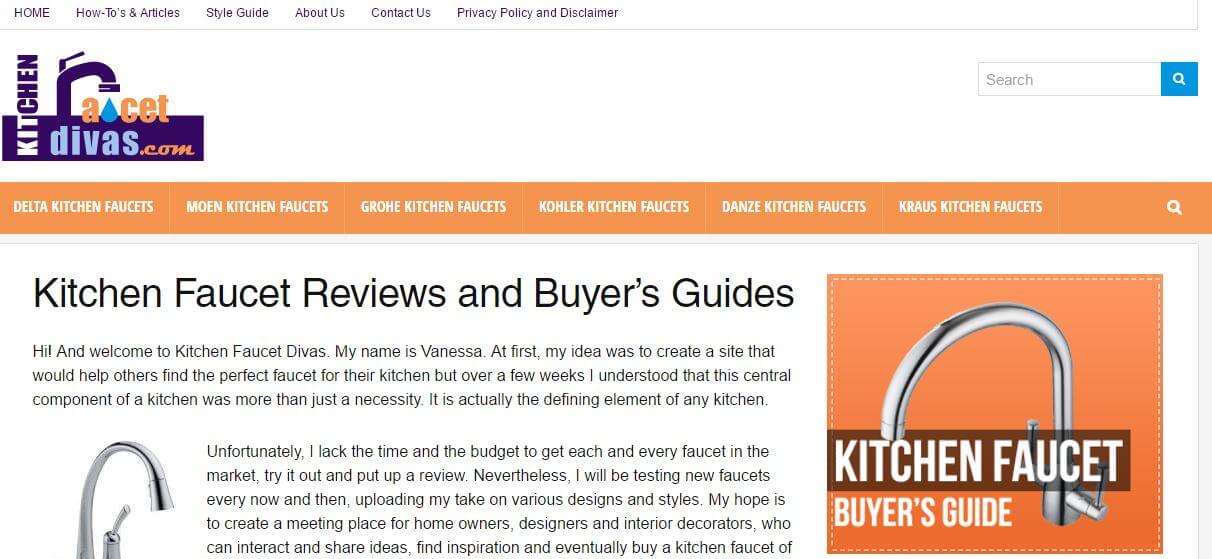
KichenFaucetDivas – Amazon Affiliate Website Example
KitchenFaucetDivas.com
This was one of the first Amazon Affiliate Website Examples I ever came across. I thought it was incredibly simple before I saw some other websites that were even worse. A lot of it is what you would expect. A wordy homepage with a couple of pages in the menu bar that all resemble more keyword targeting than actual helpful navigation. I keep wondering if they actually reviewed all those different kitchen sinks, because that would be a lot of work installing and disassembling numerous sinks to see how they work. Likely not, their “About Us” page just says a “Mother of two” which tells me as the reader, if you’re not putting your name on this, your reviews are probably just as generic. Usually, if an “About” page doesn’t list a name or company, I assume that the website is just as generic.
Monthly Visitors (SimilarWeb) : 30.20K Visitors
Average Post Length: 300 – 500 Words
One of Most Searched Products: Best Kitchen Faucet
How much do they make: I don’t know how much they make.
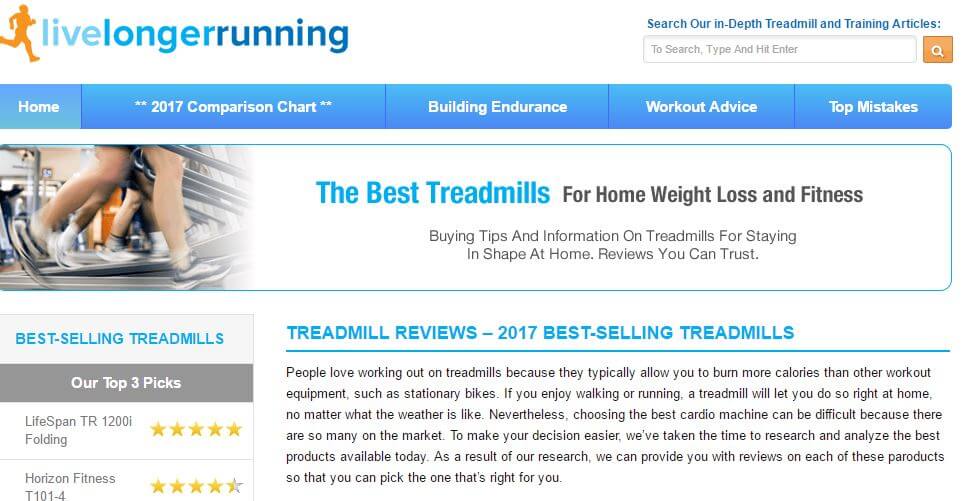
LiveLongerRunning – Amazon Affiliate Website Example
LiveLongerRunning.com
I read this title and expected an awesome community of runners sharing their glory stories of braving the snow and rain to log in miles. Instead I’m directed to a boring treadmill site. This site is about 5 pages and a couple of additional pages for reviews for treadmills. The reviews are the only pages with any kind of lengthy content and those are still only around 800 words. The main redeeming quality about this site, is they are focusing on high price items so even a single sale of a treadmill is a nice commission. This is another example of a website you could make in a weekend. It’s motivating though because you know you can do better, right?
Monthly Visitors (SimilarWeb) : 11.10K Visitors
Average Post Length: 500 – 1,000 Words
One of Most Searched Products: High End Treadmill
How much do they make: I don’t know how much they make.
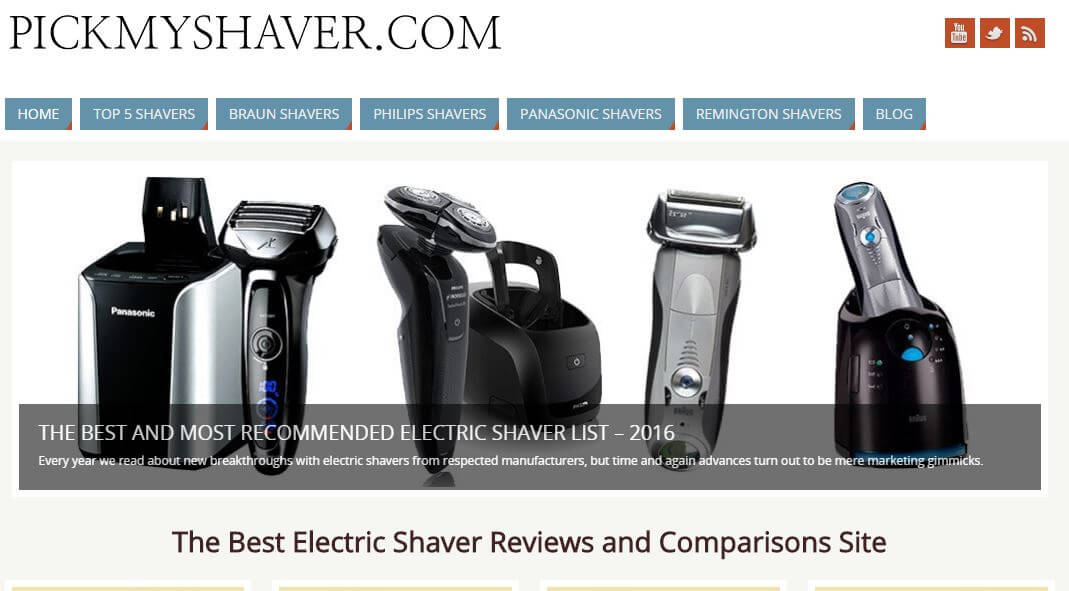
PickMyShaver – Amazon Affiliate Website Example
PickMyShaver.com
This is a review site that focuses on high-end shaving equipment to have a nice mix of lower end and higher end shavers for a nice variety. It’s a simple/clean website design with lots of photos to help people understand the variety. Each review is decently long, but nothing to rave about. What is impressive is each review has a good amount of comments that are answered by the website owner. That tells me that the owner is monitoring this site and probably adding new content. A site like this wouldn’t be too hard to maintain. I’m thinking, maybe they add a new blog post once a month.
Monthly Visitors (SimilarWeb): 41.90K Visitors
Average Post Length: 800 – 1,000 Words
One of Most Searched Products: Best Electric Shaver
How much do they make: I don’t know how much they make.

100DaysOfRealFood – Amazon Affiliate Website Example
100DaysOfRealFood.com
This is a great example of an Amazon Affiliate Website that’s not a review site! It’s actually more like a food blog that recommends certain products through their blog and resource pages. With 1.6 Million Facebook Likes, Lisa Leak (owner) has become an authority on “real food” and uses this platform to sell other things like her own cook book. This example is more for a traditional blogger who wants to start monetizing their website rather than creating a review site.
Monthly Visitors (SimilarWeb) : 407.60K Visitors
Average Post Length: 500 – 1,000 Words
How much do they make: She doesn’t list how much she makes on her blog.

InflatableHotTubGuide – Amazon Affiliate Website Example
InflatableHotTubGuide.com
So this is a niche I guess. This is an interesting example of a site built around a high price item that I could see people willing to buy online rather than a store. This doesn’t leave a lot of room to expand into other hot tub areas, but if your focus is “inflatable hot tubs” then go for it. I can’t imagine they update it too often, the last time seems to be August 2015, but what’s new in the world of inflatable hot tubs?
Monthly Visitors (SimilarWeb) : 967 Visitors
Average Post Length: 500 – 1,000 Words
One of Most Searched Products: Cheapest Inflatable Hot Tub
How much do they make: I don’t know how much they make.
29 Other Amazon Affiliate Website Examples
These additional websites, while different, follow a similar pattern of the previously mentioned. It’s a great list to reference what others are doing in the niche website world with Amazon Affiliates.
- SmartMonkeyFitness.com – Reviews (Fitness)
- DrillsAndDrivers.com – Reviews (Tools)
- ChooseWheels.com – Reviews (Transportation)
- Lucieslist.com – Reviews/Blog (New Moms)
- GrowABeardNow.com – Reviews (Shaving)
- Bpillow.com – Reviews (Pillows)
- TheBestEspressoMachines.org – Reviews (Coffee)
- AGreatShower.com – Reviews (Shower Heads) – Probably copying KitchenFaucetDivas above
- ShaverList.com – Reviews (Shaving)
- TopDronesForSale.org – Reviews (Drones)
- SewingMachineJudge.com – Reviews (Sewing Machines)
- TheRoundingSound.com – Reviews (Everything that makes Sound)
- KnifeInformer.com – Reviews (All Knifes)
- KitchenKnifeGuru.com – Reviews (Kitchen Knifes)
- eScooterBox.com – Reviews (Electric Scooters)
- MicrophoneGeek.com – Reviews (Microphones)
- VacuumJudge.com – Reviews (Vacuums)
- Oomphed.com – Reviews (Hair Dryers)
- Top5LawnMowers.com – Reviews (Lawn Mowers)
- ShredderSelect.com – Reviews (Paper Shredders
- BestElectricHoverBoard.com – Reviews (Hover Boards)
- MassageChairLand.com – Reviews (Massage Chairs)
- CoolCampingGear.com – New Product Site (Camping Gear)
- DigitalTrends.com – Reviews (Digital Products)
- BestRecliner.net – Reviews (Chairs)
- AquariumAdviser.com – Reviews (Fish Stuff)
- CanineJournal.com – Reviews (Dog Stuff)
- ThoroughlyReviewed.com – Reviews (Everything)
- PodcastInsights.com – Reviews (Podcast Equipment)
- 101birthdaygift.com – Products like ThisIsWhyImBroke
Thank you
Thanks to some helpful Reddit users, One Man’s Brand and Niche Site Project for some of the inspiration to make this list of 50 happen!
What I learned from 50 different Amazon Affiliate Website Examples
This list is pretty freaking significant with so many lessons learned. I hit on many of these in individual reviews but here are the highlights.
- Keyword Research is Key – is the single most important thing you can do. If your keyword is too broad, it’ll get lost in the sea of other websites and if it’s too narrow, no one is going to visit your site.
- Review Sites Are Popular – There are a couple exceptions, but most of these successful Amazon Affiliate Websites are just review sites that give people an idea of what the item is like before they buy. There is definitely something to it.
- Content is King – The more successful websites had content that was around 1,000 words per post. Google identifies this as better content and it’ll help your search rankings. It can’t just be gibberish though, it helps if you break up the content into 6-8 different sections so it’s easy for the user to navigate while still being lengthy. I used to think 300 words was good and 500 was above and beyond. I’ll likely spend even more time on articles and aim for around 1,000 words per article like my most popular article “Robinhood App Review” at 1,500 words.
- Mix High & Low Price Items, but Lean Towards High Price – if you’re doing all this work to push people towards a certain product, make sure that product is worth it. It doesn’t make much sense to review a $5 item with 1,000 words. You should lean towards those higher price items that will give you higher commissions. Remember, you get a percentage of the sale, not a flat fee.
- Get People To The Amazon Store – Many of these websites that had more sales, sent more people to the Amazon store. It’s a numbers game, the more people you send the Amazon market place, the more that will buy.
Conclusion
Affiliate Marketing is easily one of my favorite income streams from our list of ways to make money.
Just imagine how much you could start investing if you owned or two of these niche sites. The thing is, it’s completely do-able. I have the skills (most people do) to create something like this. I am so freaking pumped to start my next niche website! I’m using these lessons learned to start my keyword research now. I’ll follow up on my progress in the upcoming blog posts. I really hope this helps you as much as it did me. It’s really inspirational to see how others are making additional income online with niche websites!
Am I missing any good Amazon Affiliate Website Examples I can add to this list?

Wallet Squirrel is a personal finance blog by best friends Andrew & Adam on how money works, building side-hustles, and the benefits of cleverly investing the profits. Featured on MSN Money, AOL Finance, and more!



